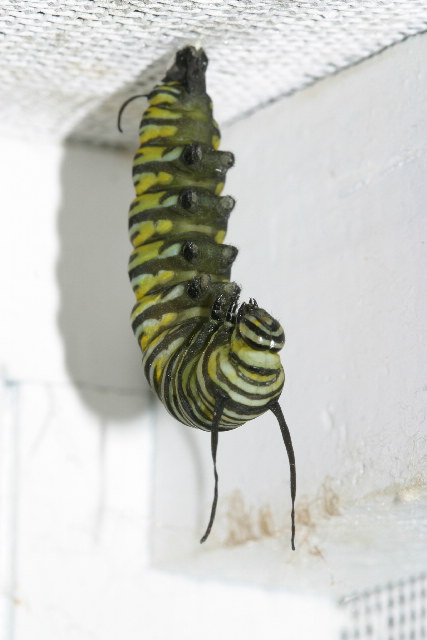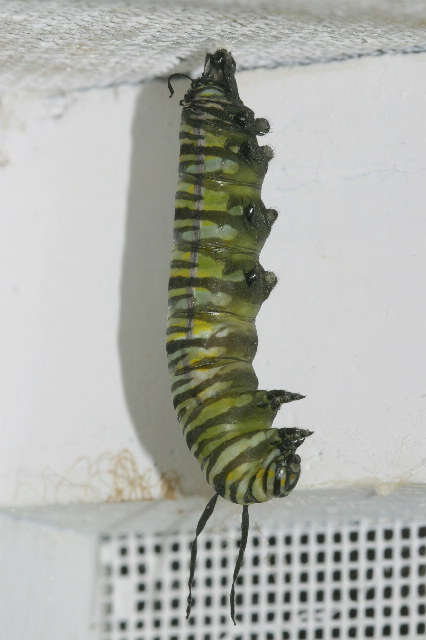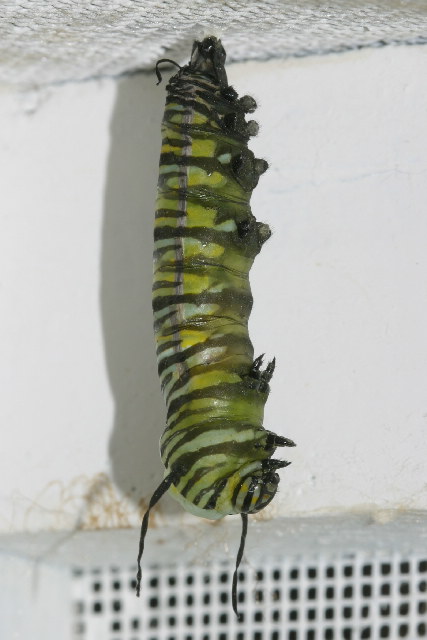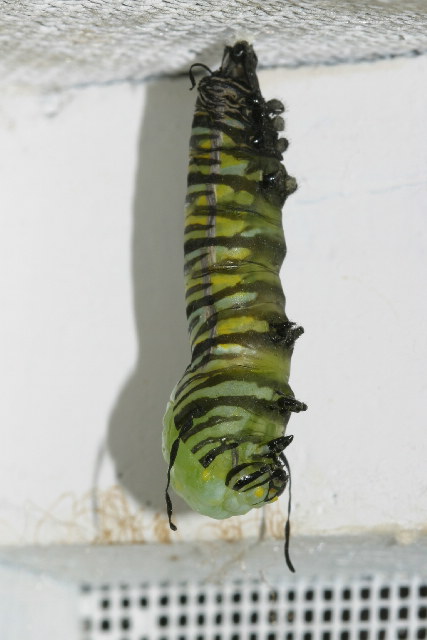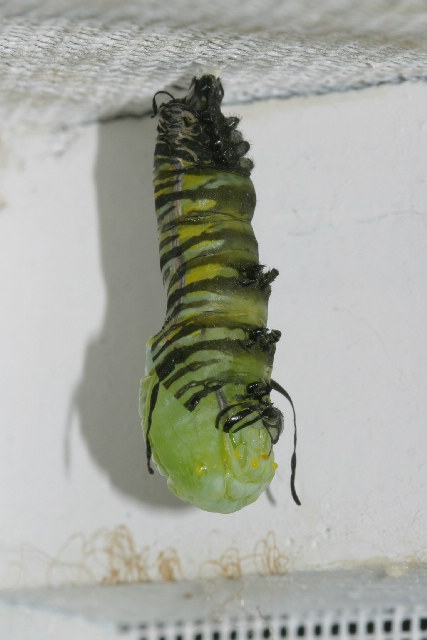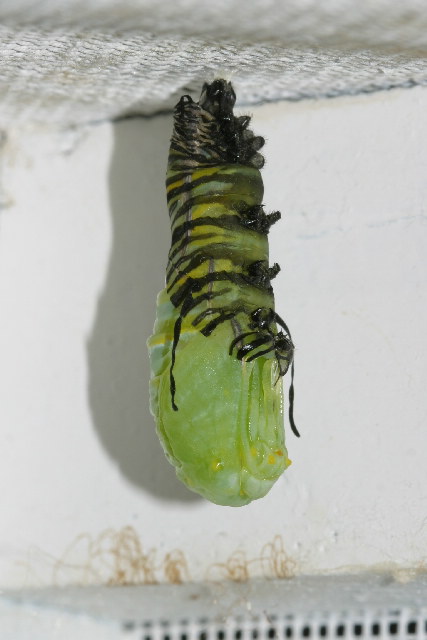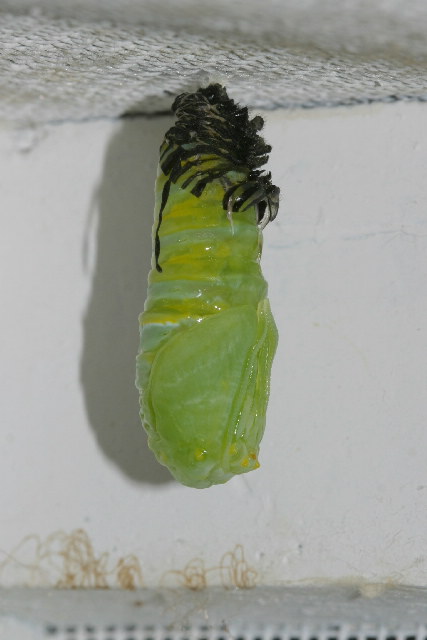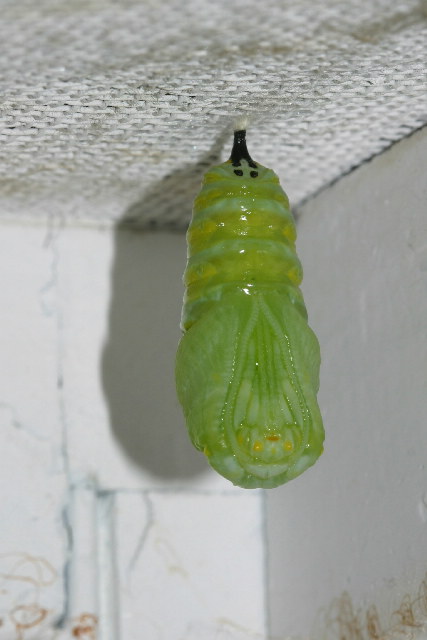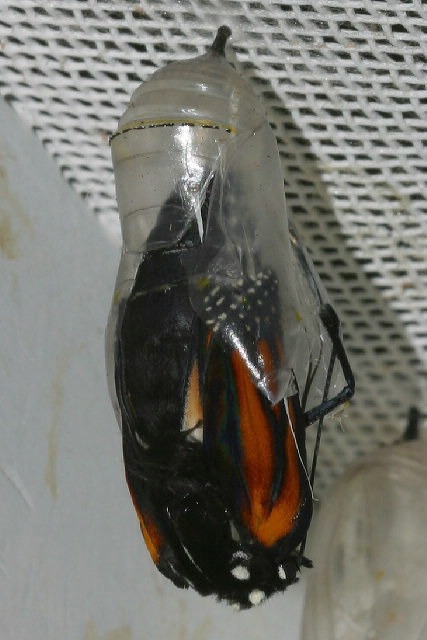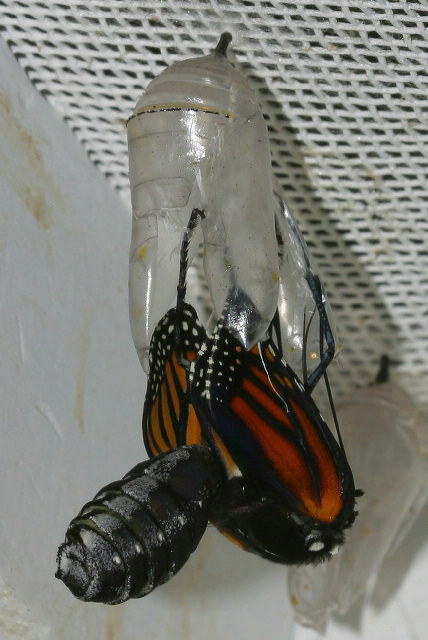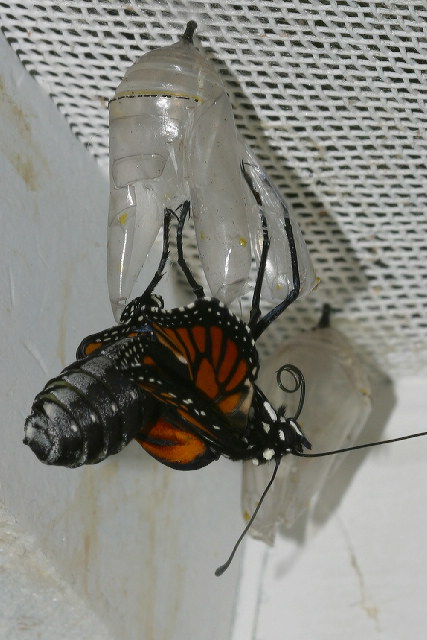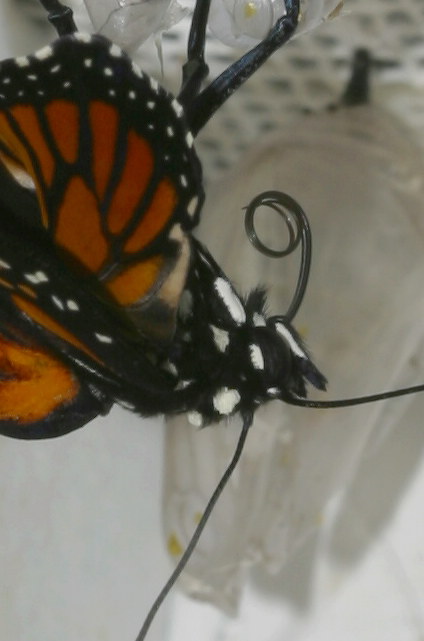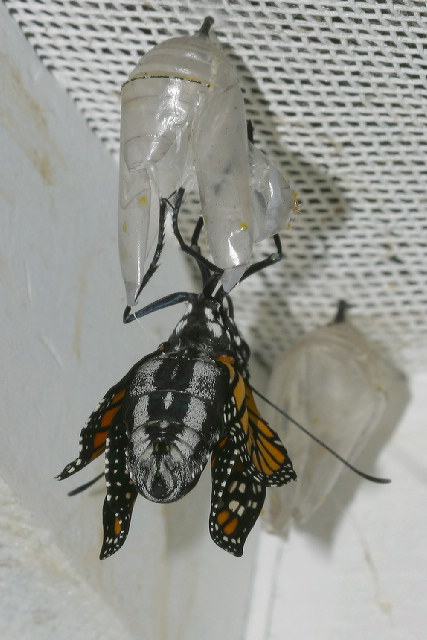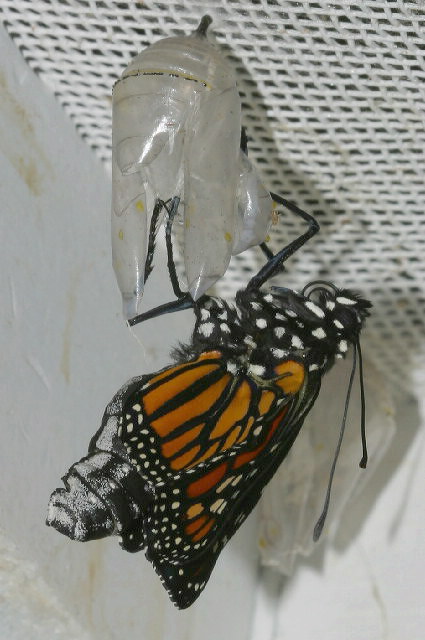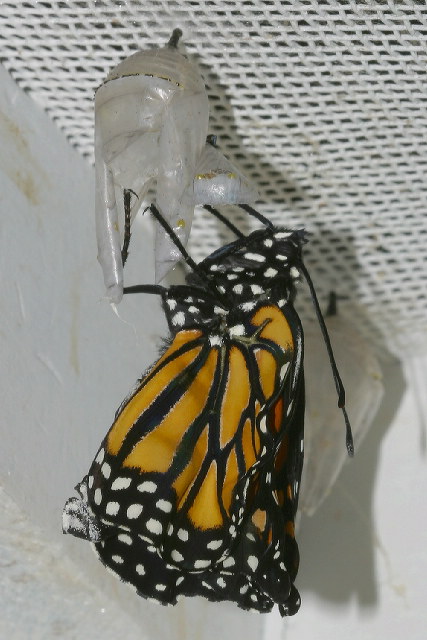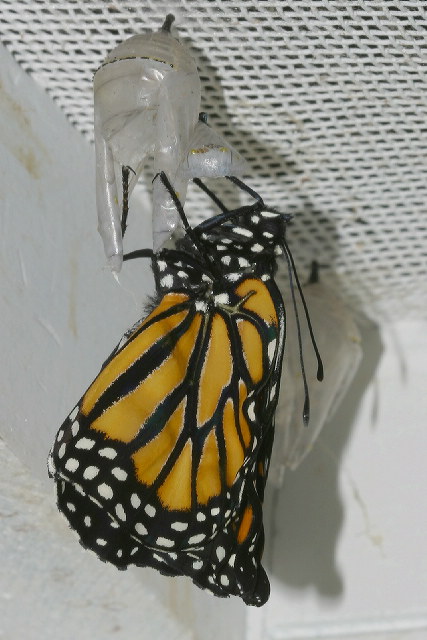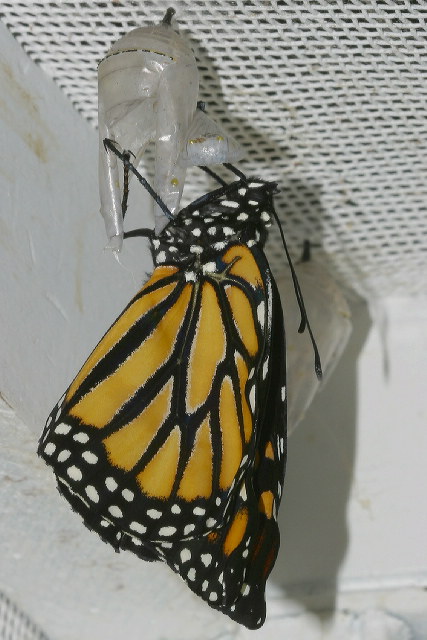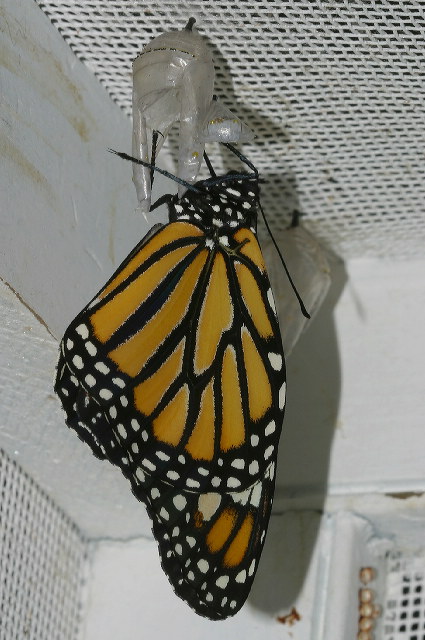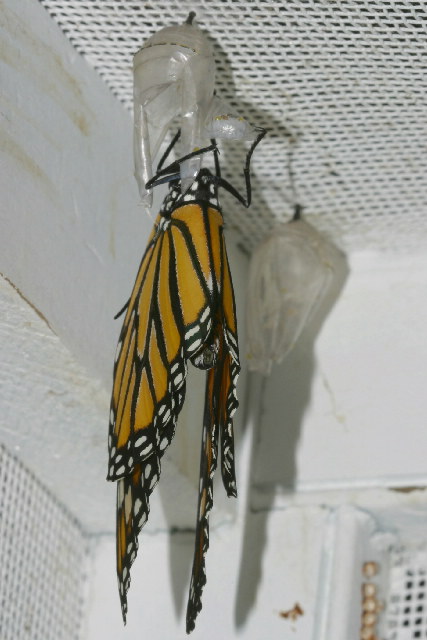Monarch Butterfly (Danaus plexippus) Transitions: Caterpillar to Chrysalis and Chrysalis to Butterfly - Stan Malcolm Photos |
mHome Page Stan Malcolm Photo |
Caterpillar
to Chrysalis August 22, 2007 The process of a butterfly emerging from its chrysalis is remarkable to watch, but in my opinion the transformation from caterpillar to chrysalis is far more impressive because the two stages are so different in form. In the chrysalis you can already see the wings, legs, and antennae of the adult butterfly in miniature. In the caterpillar, there is no hint of the chrysalis stage to come.
The caterpillar hung in a "J" shape since the previous evening. "Feelers" went limp in the last hour or two before metamorphosis. (These are fleshy extensions of the body wall, not antennae. The antennae of caterpillars are minute.) The caterpillar vibrated to loosen the old skin.
Once the skin had loosened, it was time to transform: it abruptly straightened out.
Hard to see, but the skin of the thorax first split behind the head on the back. You can see a sliver of the green chrysalis coming out.
The process continued as the old skin shriveled away. See how the abdominal prolegs were already bunched up at the top?
Note how transparent the old skin became.
Now you can begin to see features of the adult butterfly on the surface of the chrysalis: eyes, antennae, legs, and wings.
I once heard this process compared to a woman removing her pantyhose without using her hands.
The chrysalis wriggled to detach the old skin and attach its "cremaster" into the button of silk above it. The cremaster is black (and better seen in the next picture). It has velcro-like hooks that embed into the silk.
Finally free. This sequence of photos was taken in under two minutes, but the "J" stage before it was roughly 20 hours.
Skipping ahead, this is what it looked like a couple of hours later as it assumed the final shape. The metallic gold markings go well with the pale jade green. Chrysalis to Butterfly September 2, 2007 The day before emergence, much of the butterfly inside had "colored up", though the abdomen at this point remained greenish.
This morning, shortly before emergence, the butterfly was all dark. It stayed this way for some hours. The tip off for imminent emergence is the way the abdominal segments distend almost as accordion pleats. (In ealier photos, the abodomen is smoothly curved.)
The chrysalis skin split in several places and the butterfly first extracted its legs and antennae.
Moments later, you can see that the body has slid down...
...and ploped out.
The wings were nearly as small as when inside the chrysalis skin.
The proboscis through which the butterfly will drink started out as two halves which had to be dovetailed together. Here you can see that the tip still wasn't joined.
The abdomen was large, filled with fluid used to expand the wings.
Starting to expand, at this point the wings were still shorter than the abdomen.
Now as long as the abdomen.
Now longer.
Longer still...
...and finally full size. From the time the chrysalis skin split until the adult butterfly's wings were fully expanded took just 16 minutes.
The wings were still soft at this point. They needed several hours to harden before the butterfly could fly. |
